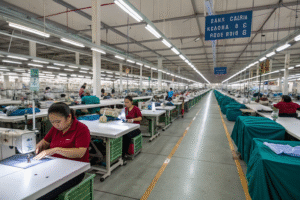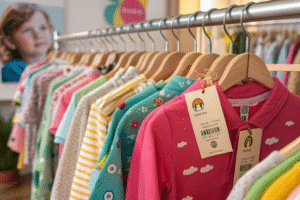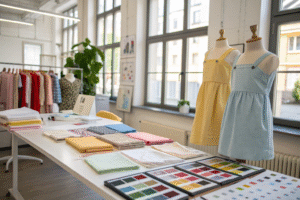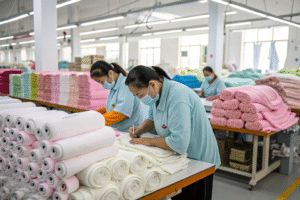Fabric composition labeling might seem like a small detail, but it plays a huge role in compliance, consumer trust, and product quality perception. In children’s wear manufacturing, accurate labeling is not just good practice — it’s often a legal requirement in many markets.
As a children’s clothing manufacturer, I’ve worked with brands exporting globally, and I’ve seen how mislabeling can lead to fines, customs delays, or even product recalls. Here’s why fabric composition labeling is so critical and how to get it right.
Legal Compliance in Different Markets
Every major market — including the U.S., EU, Canada, and Australia — has specific textile labeling laws that require accurate fiber content disclosure.

Why is compliance important?
Non-compliance can lead to product seizures at customs or forced relabeling. In the U.S., the Textile Fiber Products Identification Act (FTC guidelines) governs labeling, while the EU follows Textile Regulation (EU) No 1007/2011.
What must be included?
The percentage of each fiber in descending order (e.g., “95% Cotton, 5% Spandex”), and in some markets, country of origin and care instructions.
Building Consumer Trust
Accurate fabric labels help parents make informed purchasing decisions, especially for children’s clothing where comfort, safety, and allergies matter.

Why do customers rely on fabric labels?
They want to know if the fabric is breathable, stretchable, or hypoallergenic. A label that reads “Organic Cotton” but contains synthetics can damage a brand’s reputation.
How can brands enhance trust?
Use certifications like GOTS or OEKO-TEX to verify fabric claims, and include these on the label when applicable.
Supporting Care and Longevity
Fabric composition determines the correct washing, drying, and ironing methods to maintain a garment’s quality.

Why does composition affect care?
For example, a cotton-poly blend may resist wrinkles better than 100% cotton, but it requires different ironing temperatures. Accurate labeling prevents shrinkage, color bleeding, and early wear.
What’s the benefit for brands?
Fewer customer complaints and returns due to care mishaps, leading to better customer satisfaction.
Streamlining Supply Chain and Quality Control
Clear composition labeling helps factories, buyers, and quality inspectors stay aligned from raw material sourcing to finished garment delivery.

How does labeling help internally?
It prevents production errors, like mixing up similar-looking fabrics with different properties. It also ensures consistency across multiple production batches.
Why is this critical for exports?
Global supply chains often involve multiple suppliers. Consistent labeling keeps every partner aligned on material standards.
Conclusion
Fabric composition labeling is critical for legal compliance, consumer trust, product care, and internal quality control. For children’s clothing, where safety and comfort are paramount, getting it right is non-negotiable.
If your brand needs reliable, compliant labeling solutions for global markets, contact our Business Director Elaine at elaine@fumaoclothing.com. At Shanghai Fumao, we produce accurately labeled, regulation-ready garments that meet both legal requirements and customer expectations.


